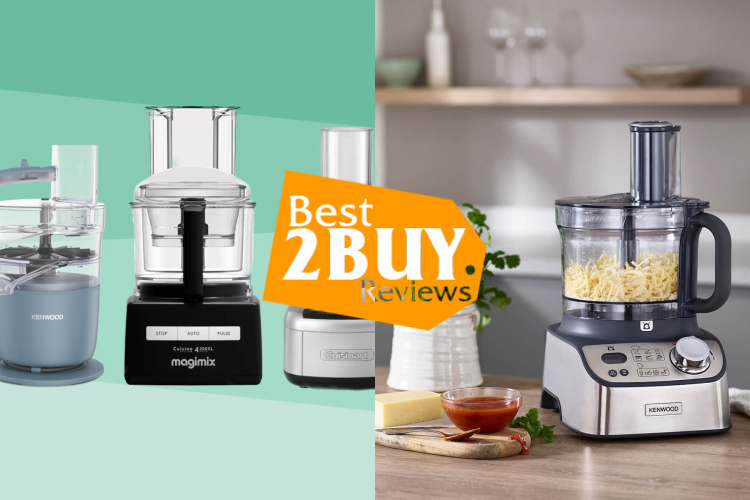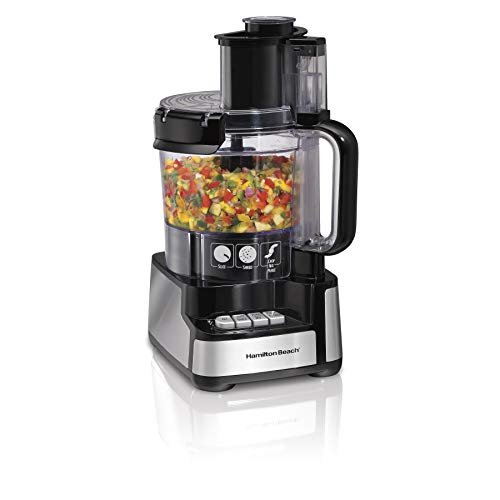Everything You Need To Know Before Choosing A Food Processor

What Is A Food Processor?
A food processor is a versatile kitchen appliance used for various food preparation tasks. It typically consists of a motorized base unit with a bowl and a set of interchangeable blades and attachments. Food processors are designed to simplify and speed up tasks such as chopping, slicing, shredding, pureeing, mixing, and kneading.
The motor powers the blades or discs, which can be adjusted to achieve different levels of thickness or coarseness. The bowl is where the ingredients are placed, and the blades or discs process them according to the desired function. Some food processors also come with additional attachments like citrus juicers, dough hooks, or grating discs.
Types Of Food Processor
There are various types of food processors available in the market, each with its specific functions and features. These include:
- Blender: A blender primarily focuses on blending liquid ingredients. While most blenders can only mix soft ingredients, some have special functions for chopping chunky food items.
- Mixer: A mixer is a food processor used for blending batter, kneading dough, beating egg whites, whipping cream, and mixing icing. There are two main types: stand/benchtop mixers and hand mixers. Stand mixers are ideal for baking larger quantities of cakes, bread, meringue, biscuits, etc., and often come with various attachments for tasks like pasta-making, citrus juicing, and more.
- All-in-one food processor: An all-in-one food processor is a versatile appliance capable of performing various cooking tasks, including chopping, blending, grinding, and dicing. They come in different sizes and capacities to accommodate various needs. While they offer multiple functionalities, they tend to be more expensive than mini- or full-sized units.
- Hand-operated food processor: A hand-operated food processor is a manual appliance that requires you to use your own effort. It is suitable for holding a small number of ingredients and is great for campers, travelers, or users who prefer backyard barbecues since they do not require electricity. Hand-operated food processors can handle basic chopping tasks for vegetables used in salsa or soup, but they are not suitable for larger quantities or tougher food items like meat.
- Commercial food processor: Commercial food processors are larger and more powerful than processors designed for home use, such as hand-operated or all-in-one models. They can handle larger quantities of ingredients, making them suitable for preparing larger dishes. Commercial food processors come in various capacity sizes, ranging from five to twelve cups, and their prices depend on their power and the number of attachments they offer.
What are the different ways to use a food processor?
Food processors are equipped with multiple settings to handle various tasks such as mixing, stirring, slicing, chopping, dicing, shredding, grating, kneading, zesting, pureeing, mashing, grinding, and emulsifying different food items. Here are eleven practical uses of a food processor that involve these settings:
- Vegetable Chopping: Easily chop vegetables like carrots and celery by using the chopping mode, which comes in handy when preparing soups or stews, as it cuts fruits, vegetables, and meat into smaller pieces.
- Ingredient Grinding or Mincing: Utilize the grind mode to turn spices such as garlic or parsley into fine powder or mince them to the desired consistency.
- Nut Cutting: At medium speed, the food processor can grind and dice nuts into smaller pieces without reducing them to powder, making them suitable for various recipes.
- Meat Mincing: Use medium speed to mince larger food items like meat, preparing them for dishes like shepherd's pie or pasta Bolognese.
- Breadcrumbs Creation: Make breadcrumbs for your next schnitzel or lasagna project by chopping bread in the food processor.
- DIY Flour: In case you run out of flour, transform oats into flour by grinding them in the food processor.
- Baby Food Puree: Utilize the puree function to blend ingredients into a smooth paste or fine liquid, perfect for making soups and baby food.
- Salsa Blending: Set the mode to "mix" for effortlessly blending salsa and salad dressings.
- Cheese Shredding: Easily prepare delicious mac and cheese by shredding cheese using a food processor.
These are just a few examples of the numerous uses of a food processor with its various settings. The versatility of this kitchen appliance makes it a valuable tool for any home cook or chef.
A Guide to Choosing The Right Food Processor For Your Kitchen
Choosing the right food processor can greatly enhance your cooking experience and save you time in the kitchen. Here are some steps to help you make an informed decision:
Assess your needs: Consider the tasks you want your food processor to perform. Do you need it for basic chopping and slicing, or do you require more advanced functions like dough kneading or grating? Knowing your specific requirements will help you narrow down your options.
Capacity: Determine the size of the food processor you need. If you have a large family or frequently entertain guests, a larger capacity processor will be more suitable. However, if you have limited counter space or cook for one or two people, a smaller capacity model may be sufficient.
Power and speed settings: Look for a food processor with a powerful motor to handle tough ingredients. A motor with at least 600 watts is recommended for most tasks. Additionally, check if the processor offers multiple speed settings to accommodate different food types and textures.
Attachments and accessories: Consider the attachments and accessories that come with the food processor. Common attachments include slicing discs, shredding discs, dough blades, and chopping blades. Ensure that the processor offers the attachments you need for your desired tasks.
Ease of use and cleaning: Look for a food processor that is user-friendly and easy to clean. Features like simple controls, a wide feeding tube, and dishwasher-safe parts can make your experience more convenient.
Safety features: Check for safety features such as a locking mechanism to prevent accidental operation and a stable base to ensure stability during use.
Brand reputation and reviews: Research different brands and read customer reviews to gauge the reliability and performance of the food processor. Reputable brands often offer better warranties and customer support.
Budget: Set a budget for your food processor purchase. While more expensive models may offer additional features and durability, there are also affordable options available that can meet your needs.
By considering these factors, you can make an informed decision and choose the right food processor that suits your cooking style and requirements.











